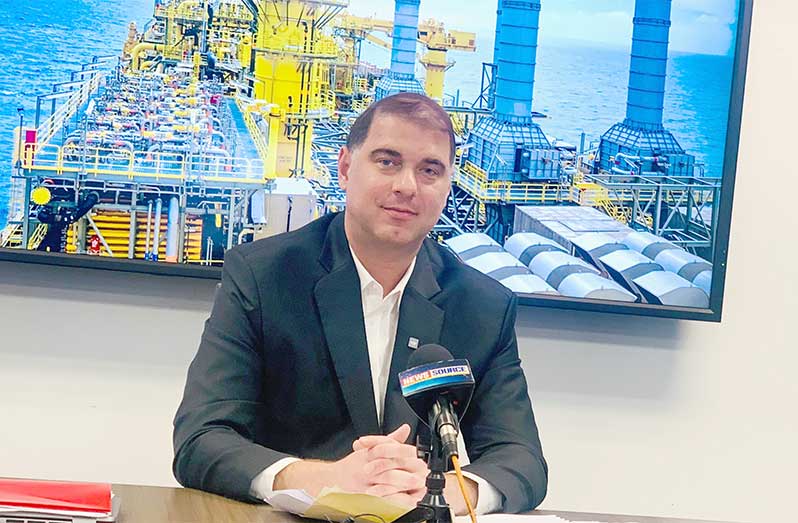-ExxonMobil paid $537B into NRF as profits near $1T
OIL giant ExxonMobil Guyana Limited (EMGL) has released its 2024 financial results showing a massive profit of almost GY$1 trillion after tax, which represents the highest annual profit declared since oil production began several years ago.
According to the company’s audited financial statements for the year ending December 31, 2024, total revenues stood at approximately GY$1.45 trillion, driven by robust crude oil production and sustained global demand throughout the year.
The cost of sales and operating expenses, while considerable, were efficiently managed, resulting in a pre-tax profit of just over GY$1.16 trillion.
After accounting for income tax and other statutory obligations, ExxonMobil Guyana recorded a net profit of GY$995.7 billion.
The soaring profits also translated into a substantial windfall for the country’s Natural Resource Fund (NRF), which received GY$537.2 billion in payments for its share of oil production and royalties for 2024 alone, nearly doubling the payments made just two years prior.

According to the company’s Vice-President and Business Services Manager, John Colling, the payment includes the government’s share of profit oil and the two per cent royalty enshrined in the 2016 Production Sharing Agreement (PSA).
“The way the Government of Guyana has elected to receive its value through the Petroleum Agreement, is through a share of the profit, 50 per cent of the profit and a two per cent royalty. And as what we’ve seen today, this arrangement has been very successful for the people of Guyana.
“It resulted in the Stabroek Block within 10 years, going from no production to 650,000 barrels a day by the fourth quarter in 2024. The taxes under the petroleum agreement are paid on behalf of the Government of Guyana,” Colling told reporters during an engagement at the company’s Kingston, Georgetown office, on Tuesday.
ExxonMobil operates under a PSA in Guyana’s Stabroek Block, which differs from traditional corporate taxation.
To put these figures in context, the PSA effectively functions as a taxation system, even though the payments aren’t labelled as “taxes” in the traditional sense.
According to the report, oil production increased significantly in 2024 largely due to the ramp-up and steady performance of the FPSOs.
The Liza Destiny FPSO, ExxonMobil’s first production vessel in Guyana, maintained stable operations throughout the year.
The Liza Unity, which came online in 2022, delivered consistent output and operated near its nameplate capacity of 220,000 bopd.
However, the standout in 2024 was the Prosperity FPSO, which began producing in November 2023 as part of the Payara development.
The report confirmed that Prosperity reached full production capacity during 2024, adding approximately 220,000 bopd to the total.
Together, the three vessels drove the company’s record-setting revenue and profits, producing a combined average of over 570,000 barrels per day across the year, peaking at over 620,000 bopd in the fourth quarter.
The statement also highlighted that the assets declared amounted to just over GY$2.4 trillion, up from the previous year, reflecting the continued capitalisation of infrastructure and upstream development.
Meanwhile, liabilities were modest in comparison, resulting in a strong net asset position.
“The increased revenue is definitely in line with the increased production. We do have a production plan. So, I would say that is not entirely unexpected.
“In fact, it’s very much in line with what one would expect given the price environment and the increased volume,” Colling said.
According to the report, all transactions were conducted in accordance with local laws and the PSA, with regular audits and oversight.
What’s Next? ExxonMobil and its partners (Hess and CNOOC) have already invested over GY$8 trillion in Guyana’s oil sector and plan to pump in another GY$5 trillion by 2028.
The goal is to raise production capacity to 1.3 million barrels by 2027, and 1.7 million barrels by 2030.












